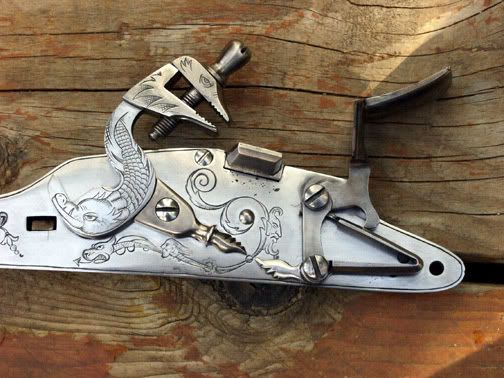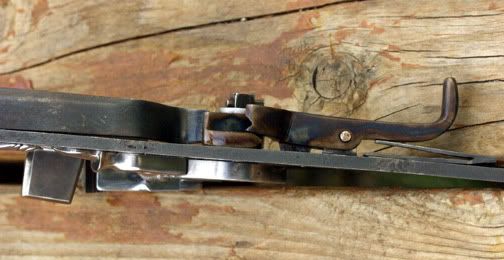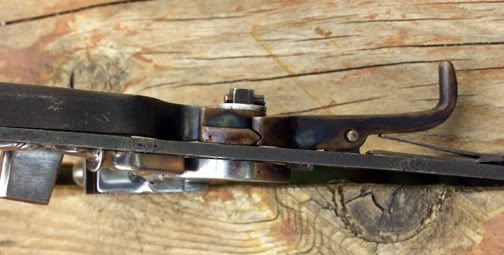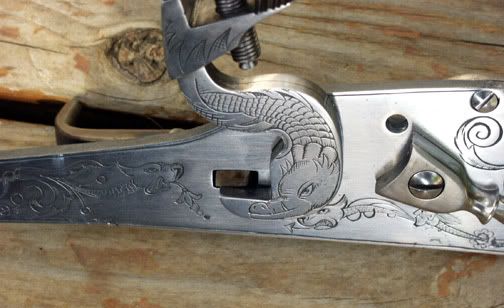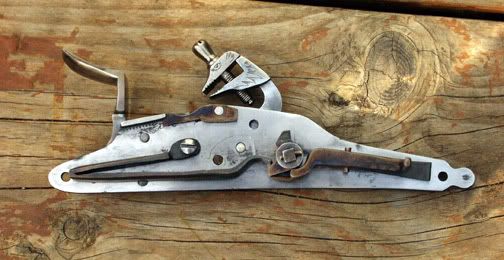Hi Colmoutrie,
You cannot tell simply by not seeing the lug in any of those photos because it may be hidden behind the cock. Here is an exerpt from Kelvin's book on Scottish pistols talking about lobe-butted pistols (those in your links):
"Thomas Murdoch must be given the credit for the new design of the pistol, which, although retaining the Highland lock and the four-staged barrel of the more traditional Doune pistols, incorporated a butt which was of lobe shape, and so resembled more the conventional English pistol, with its more rounded butt."
Kelvin describing "ramshorn pistols" like the "Murdoch?" replica:
"Toward the end of the seventeenth century, the lock mechanism was invariably of flintlock construction (earlier it was a snaphaunce), having a lateral-acting sear which pierced the lockplate in the manner of the Highland lock
"
More on the same subject:
"Throughout the century (18th) the locks retained the traditional lateral-acting, or horizontal, sear."
True flintlocks (of the French design) were used mostly on rare heart-butted pistols and 19th century "costume" pistols.
All of those pistols you provide links for probably have highland locks and you can tell that because 1) none have a screw showing positioned low behind the cock (for the vertical sear) and 2) when viewed from the opposite side on most you can see a screw high up above the belt hook. Those of you who have ever built a lateral sear gun know that those locks require the trigger to be pinned very high above the lock plate.
dave










